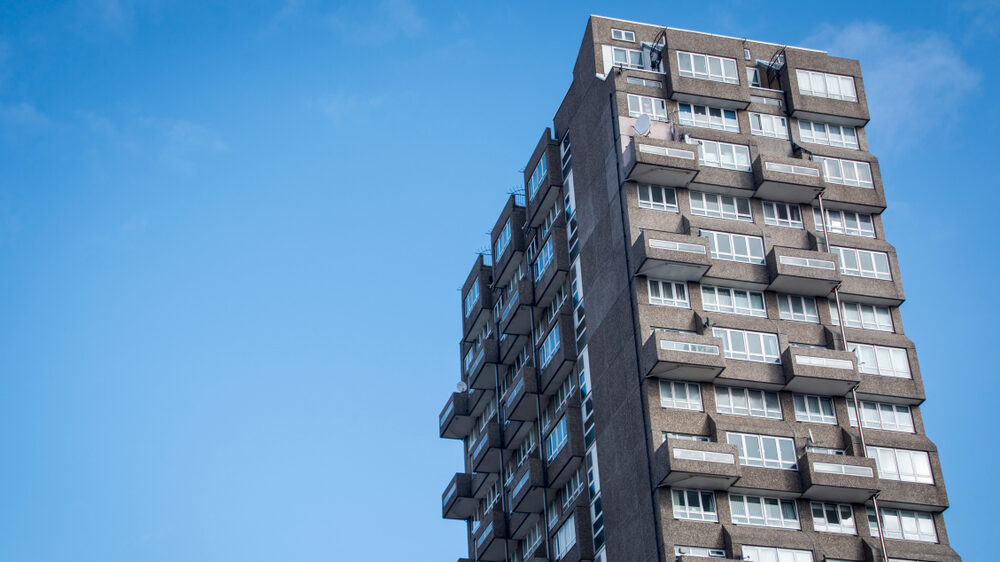UK housing faces urgent structural safety concerns, warns government advisory group
- November 21, 2023
- 10:46 am


Iain Hoey
Share this content
Alarming findings from structural safety group
A recent leaked report by the Structural Stability Working Group (SSWG), appointed by the government, has revealed significant structural safety risks within the UK housing industry.
The report, initially obtained by Inside Housing, highlights several critical issues threatening the integrity of residential and public buildings.
Key safety concerns identified
During their first meeting in December 2021, the SSWG, comprising industry experts, identified major risks, including:
- Ageing Large-Panel System (LPS) Buildings: Concerns were raised about older LPS buildings lacking adequate strengthening.
- Reinforced Autoclaved Aerated Concrete (RAAC): The use of RAAC in construction was flagged as a concern.
- Addition of Floors (Airspace Developments): Adding floors to existing buildings was seen as a potential risk.
- Steel and Timber Frame Construction: This construction method for medium and high-rise buildings was considered worrisome.
- Cladding Materials: Certain cladding materials, such as brick slips, were noted for their risk of falling and causing injury.
Market prioritising profit over safety
The minutes from the SSWG’s meeting emphasised the experts’ dissatisfaction with the market’s approach, accusing it of prioritising profit over safety.
Many structural defects remain hidden, and there is a need for a better understanding of the problem’s scale.
Reference to Ronan Point collapse
The report highlighted the structural integrity of LPS buildings, referencing the Ronan Point collapse in 1968.
It noted that many LPS buildings intended for remedial work had not been adequately strengthened.
The SSWG suggested a national-level assessment for these buildings and standardised risk mitigation measures.
Bristol Council’s proactive response
Following these revelations, Bristol Council evacuated 400 residents from a tower block due to fire and structural safety risks associated with LPS construction.
A Freedom of Information Act request revealed that the building had not been strengthened since the 1970s.
Concerns about structural engineers’ competency
The SSWG expressed concerns over the competency of structural engineers, noting that some who failed professional exams were still practising.
The group suggested a 10-year programme to educate more structural engineers, given the complexity of assessing existing buildings.
Industry response
A safety manager at a social landlord with several LPS buildings told Inside Housing: “Our LPS buildings are 60 years old, and they’ve never had any kind of structural scrutiny.”
While their organisation takes this issue seriously, it is not the case everywhere.
The manager fears that structural safety could become the next crisis due to its historical neglect.
Government’s commitment to building safety
In response to these concerns, the Department for Levelling Up, Housing and Communities emphasised its commitment to building safety through the Building Safety Act and the new Building Safety Regulator.
This body is tasked with monitoring structural and fire risks and ensuring higher safety standards in all UK buildings.
IFSJ Comment
The revelations from the Structural Stability Working Group present a renewed wake-up call for the UK housing industry.
The highlighted risks, from ageing LPS buildings to questionable construction practices, underscore the need for comprehensive measures to ensure structural safety.
The government’s response, including the Building Safety Act and the new Building Safety Regulator, is a step in the right direction, however, this situation seems to highlight a broader issue within the industry, where economic incentives often overshadow safety considerations.
The industry’s call for buildings to be made safe for residents as a non-negotiable priority, requiring ongoing vigilance, regulatory oversight, and a cultural shift towards valuing safety over profit is notable.
This development is significant not just for its immediate implications but also for its potential to catalyse much-needed reforms in building safety standards and practices across the UK.



